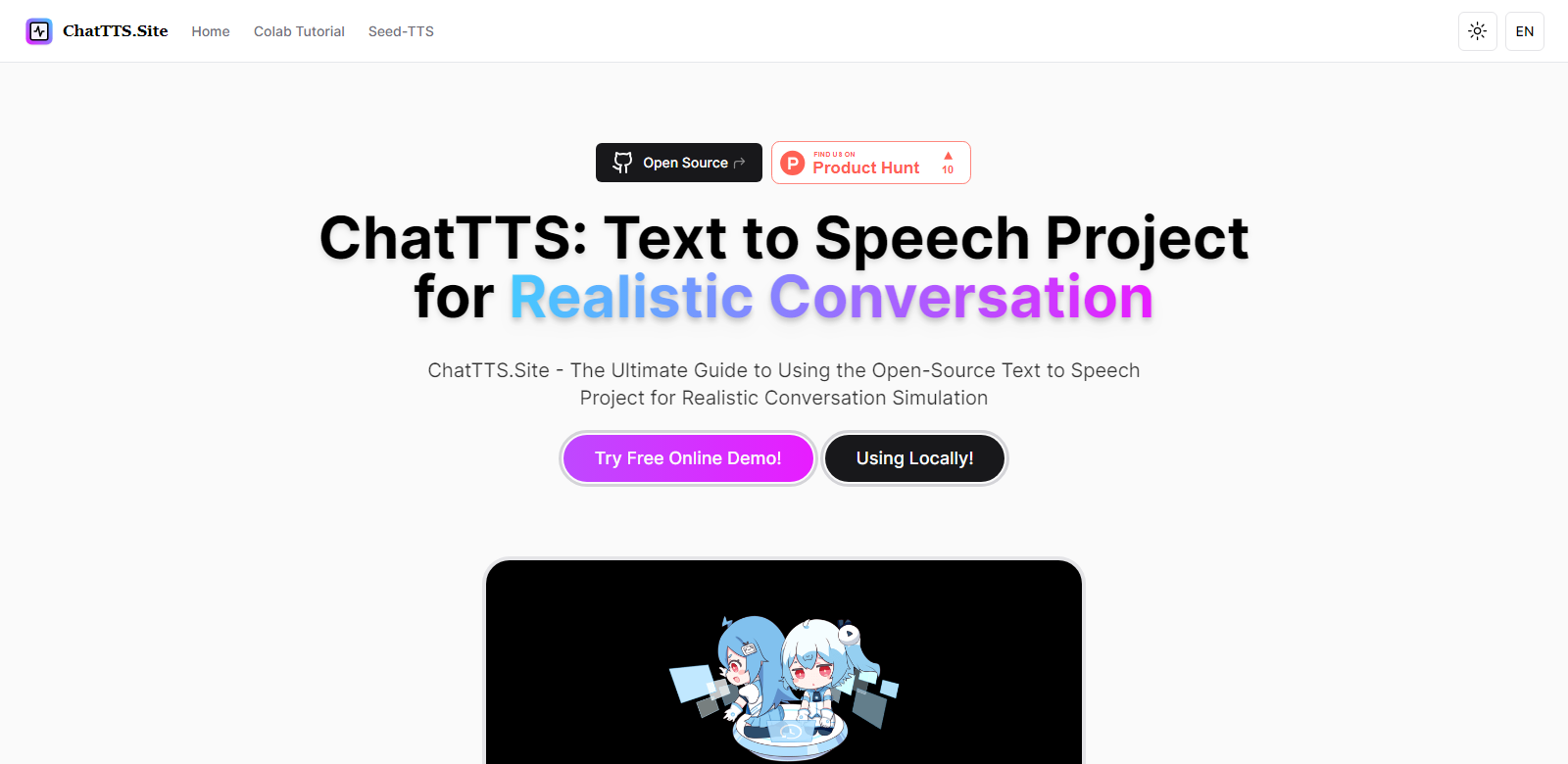ChatTTS - Guide for Realistic Audio Text-to-Speech Generation
ChatTTS is an innovative Open-Source Text-to-Speech project designed to generate realistic voice dialogues for conversation simulation. It is a comprehensive resource for users looking to create lifelike, dynamic voice interactions using state-of-the-art technology. The project blends seamlessly into scenarios that demand a dialogue-centric TTS approach, underpinned by ample training data and language versatility.
Customers
- Developers and Researchers: Those seeking to integrate TTS into conversational AI.
- Content Creators: Individuals creating dialogue-based audio and video content.
- Educators and Linguists: Professionals interested in speech generation for teaching.
- Tech Enthusiasts: Users who experiment with open-source software and AI innovations.
- Language Learners: Individuals using TTS to aid in learning English or Chinese.
Problems and Solution
Problems
- Difficulty in producing natural-sounding speech.
- Language limitations in TTS applications.
- Inaccessibility of advanced TTS models.
Solution
ChatTTS counters these challenges with a well-trained speech model that delivers human-like intonation and pauses, supports two widely spoken languages, and is maintained as an open-source project, ensuring accessibility and collaboration.
Use Case
ChatTTS excels in situations where conversation feels matter, such as virtual assistants and language learning tools. It is used to create natural audio content for videos, podcasts, and e-learning modules, providing a richer, more engaging user experience.
Frequently Asked Questions
-
What is ChatTTS?
ChatTTS is a specialized TTS model for dialogue scenarios, supporting English and Chinese and boasting over 100,000 hours of audio data for training.
-
Is ChatTTS free to use?
Yes, the project is open-source and free. It can be cloned or downloaded from GitHub for use in various applications.
-
How do I install ChatTTS?
Users can follow the installation instructions provided in the 'Using ChatTTS Locally' section of the website to install the necessary components and use the TTS model.
-
Where can I find the source code for ChatTTS?
The source code is available on GitHub at https://github.com/2noise/ChatTTS.
-
In what languages is ChatTTS available?
Currently, ChatTTS supports both English and Chinese languages.
-
How do I use ChatTTS in my project?
ChatTTS can be integrated by importing it into a Python project and utilizing the
chat.infermethod with the desired text. -
Can I contribute to the ChatTTS project?
Contributions are welcome and can include issue discussions, GitHub issues submissions, and pull requests.
-
What kind of support does ChatTTS offer?
Support can be sought through formal inquiries, the QQ group, or submitting GitHub issues.
-
How is ChatTTS different from other TTS models?
It is designed for dialogue, offers fine control over speech features, and delivers superior prosody.
